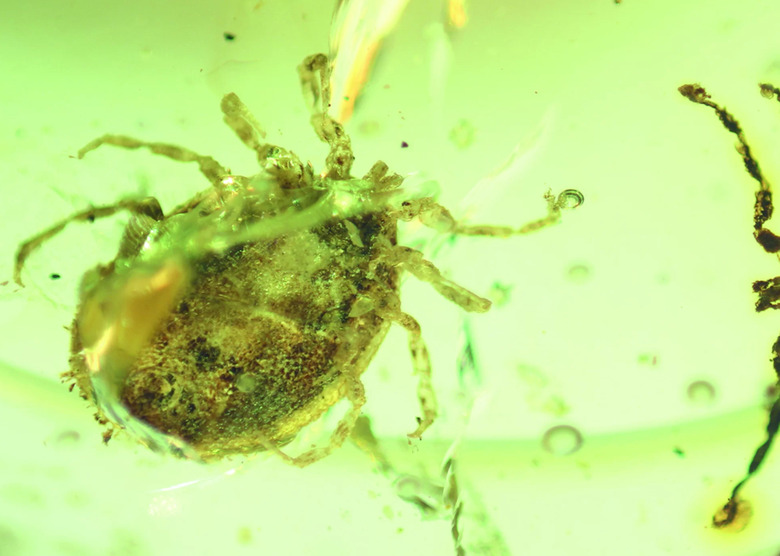Ancient Tick Preserved In Amber Found On A Dinosaur Feather
A chunk of amber dating back about 99 million years has been found containing perfectly preserved ticks, shedding light on how these tiny pests evolved and what similarities they shared with their modern-day counterparts. One particular tick found within the amber has caught researchers' attention: it is young and shown clearly clinging to a preserved feather, seemingly confirming that these parasites sought out dinosaurs.
Ticks remain a big problem to this day: they carry diseases and are particularly problematic for pet owners who live in certain states. The parasite isn't a new problem, though; various creatures have been dealing with them for millions of years. Debate exists about whether ticks had fed on dinosaurs, and now a tiny one preserved in amber offers an answer: yes, they probably did.

Amber has been the source of many preserved insects, giving us a near-perfect look at critters that crawled the land millions of years ago. As in those cases, the tick spotted in a piece of amber earned itself that perfect tomb by having fallen into some tree sap millions of years ago. The tree sap encased the tick — and the feather to which it still clings — and then hardened, eventually forming amber that has withstood the stresses of the ages.
This amber and some other bits containing ticks were found in Myanmar. The pieces were polished and originally sold off to private collectors. However, those collectors spotted the tiny creatures in them and, believing they could have scientific value, shared the amber with scientists. Those scientists soon discovered that one of the specks was a young preserved tick called a nymph.
The tick is described as being trapped in a feather that is also encased in the amber. This reasonably links the parasite to the feathered host, an extreme rarity for items from that time. Because the amber dates back to the Cretaceous period, it is evidence that ticks fed on dinosaurs, since modern feathered birds weren't around at that time.
Researchers explain that the amber has preserved the tick in extreme detail, including tiny features like its teeth and hairs. Also contained in some amber are a different type of tick known as the Dracula's tick — it's the kind that swells up to a large size after feasting on blood.
SOURCE: Live Science
